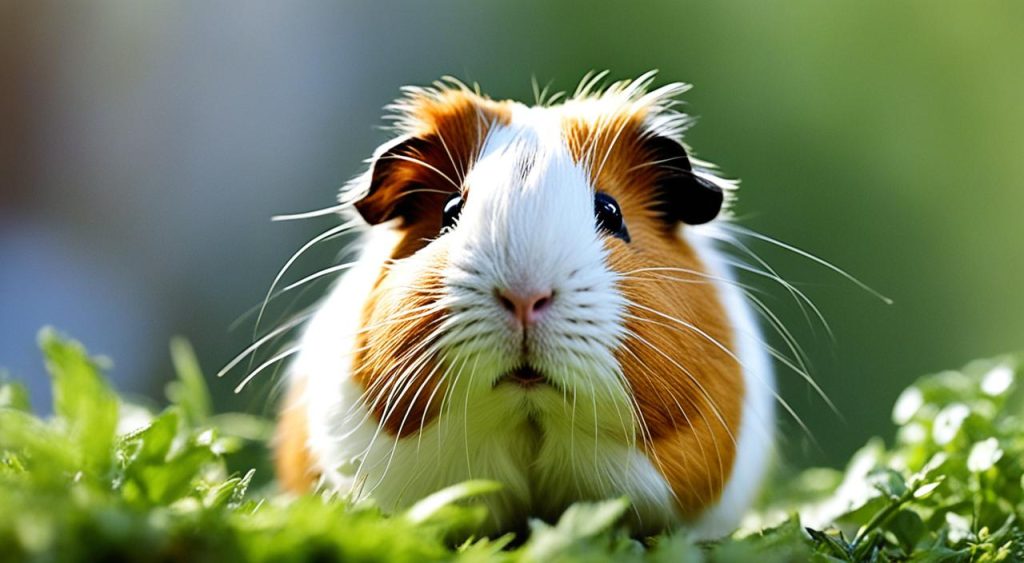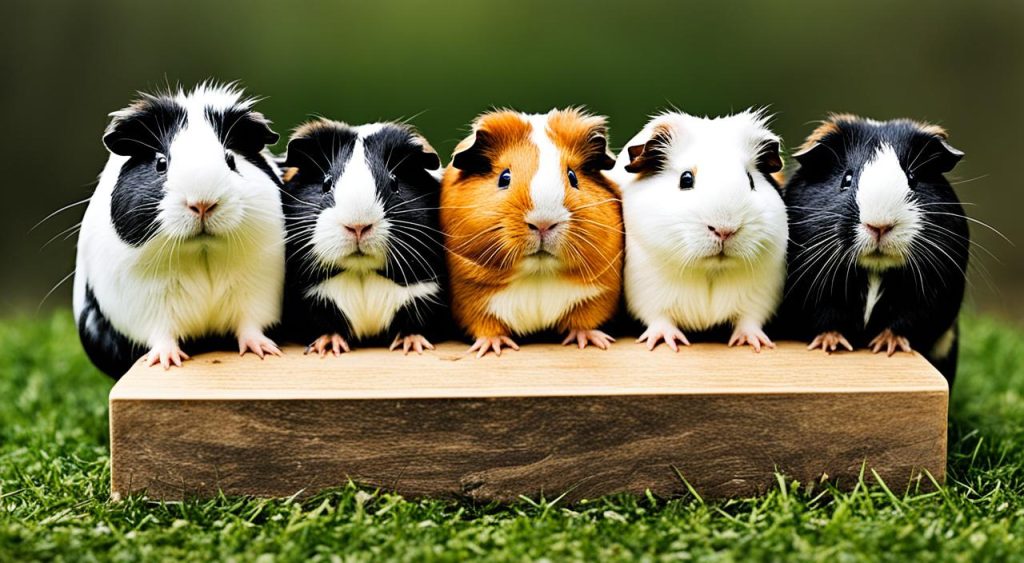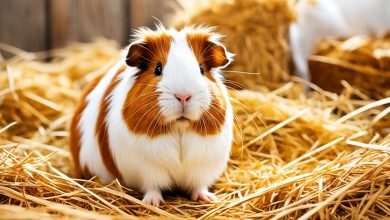People in the Andean Region of South America might have started keeping guinea pigs as pets about 7,000 years ago. The montane guinea pig, known as Cavia tschudii, is a special and interesting Andean rodent. It is thought to be an early ancestor of the guinea pigs we keep as pets today.
Introduction to the Montane Guinea Pig
Origins and Classification
The montane guinea pig, known as Cavia tschudii, lives in the Andes Mountains of South America. It’s a small rodent in the Cavia genus, along with other guinea pigs. This species is part of the Kingdom Animalia, Phylum Chordata, Class Mammalia, Order Rodentia, and Family Caviidae.
Physical Characteristics
This guinea pig is small, weighing 500-600 grams. It has coarse, brown or grey fur that blends well in the Andes. Its build and fur are perfect for the cold, high places it calls home.
| Characteristic | Description |
|---|---|
| Body Size | Typically weigh between 500-600 grams |
| Fur | Coarse, uniform brown or grey coloration |
| Adaptations | Compact, stocky build and thick fur for thriving in cool, high-altitude conditions |
The montane guinea pig’s size and fur make it well-suited for life in the Andes. It can move easily through the tough terrain and cold climate of its home.

Habitats and Distribution
Natural Habitats in the Andes
The montane guinea pig lives in the tough terrain of the Andes Mountains. They are found in high places in Peru, Bolivia, Argentina, and Chile. They’ve learned to live in the tough Andean highlands.
They live in dry, rocky areas and grasslands. You can see them moving through the little plants. These places are very high, over 3,000 meters (9,800 feet) up. This makes life hard for them with the cold, thin air, and not much food.
But, the montane guinea pig has found ways to survive and even do well in these Andean highlands. They have thick fur, a small body, and a way to keep their body warm. Their strong legs and sharp claws help them move over the dry rocky terrain. They also find places to hide in the high-altitude meadows.
The montane guinea pig is very important in the Andean highlands. They are a main food source for many animals. They also help keep the balance in the South American distribution of these unique places.
Behavior and Social Structure
The montane guinea pig is a social animal, living in small groups. These groups usually have one or two males and three to five females. They have a strict social order, which is maintained by fighting among males.
Montane guinea pigs have two ways to defend against predators. The first is the immobility response, where one guinea pig stays still to avoid being seen. The second is the scatter response, where they spread out to confuse predators and protect each other.
- Montane guinea pigs live in small, highly hierarchical colonies.
- The social structure is enforced through aggressive behavior, particularly between male boars.
- These guinea pigs have two main defensive responses: immobility and scattering.
Knowing about the montane guinea pig’s behavior and social structure helps us understand their life in the Andes. This knowledge is key to protecting these amazing animals.

“Montane guinea pigs have developed a sophisticated social system to thrive in their rugged Andean habitat.”
Montane Guinea Pig as Ancestors of Domestic Guinea Pigs
The domestic guinea pig (Cavia porcellus) comes from the montane guinea pig (Cavia tschudii) and other wild Cavia species found in the Andes mountains of South America. The montane guinea pig is the closest wild relative to domestic guinea pigs. They share a long history together.
Domestication History
About 5,000 years ago, the Andean people domesticated the montane guinea pig. They chose to breed certain traits, changing the wild guinea pigs into the friendly, varied domestic guinea pigs we see now.
Differences from Wild Counterparts
- Larger Size: Domestic guinea pigs are bigger than their wild ancestors.
- Varied Coat Colors and Patterns: They come in many coat colors and patterns, unlike the wild ones which are mostly brown or gray.
- Less Aggressive Behavior: Humans made them less aggressive and more friendly over time.
Domestic guinea pigs and montane guinea pigs are closely related but have changed a lot over thousands of years. Domestication made them look and act differently.

Conservation Status and Threats
The montane guinea pig is listed as Least Concern by the IUCN. This means it’s not at risk of going extinct soon. But, some local populations in the Andes might face bigger challenges.
Habitat loss is a big threat because of more farming and development. These activities push the guinea pigs out of their homes. Hunting for food and medicine also hurts their numbers in some places.
We need more research to understand the montane guinea pig’s future. Surveys can tell us about their numbers and threats. Collaborative conservation initiatives are key to protecting their homes.
| Threat | Impact | Mitigation Strategies |
|---|---|---|
| Habitat Loss | Fragmentation and reduction of suitable living spaces | Establishing protected areas, implementing sustainable land-use practices, and promoting habitat restoration |
| Hunting | Targeted removal of individuals for food and traditional medicine | Strengthening wildlife regulations, increasing enforcement, and promoting alternative livelihoods |
| Climate Change | Potential shifts in temperature and precipitation patterns, affecting food availability and habitat suitability | Monitoring and adapting conservation strategies to address climate-related impacts |

We can help the montane guinea pig by tackling its threats. With the right conservation efforts, this unique Andean creature can thrive.
Keeping Montane Guinea Pigs as Pets
Montane guinea pigs are not often kept as pets, but some people try. They have wild instincts, are small, and live in high places. Before getting one, you must think about what they need and how they act.
Challenges and Considerations
These guinea pigs need special care because of their high-altitude habits. They don’t like changes in temperature or humidity well. They are also shy and can get stressed easily.
The author has raised these guinea pigs for 18 years with a vet’s help. They live between 5 to 7 years. Many are saved from shelters because they are hard to care for.
It’s important to give them the right home and food. Use recycled paper for bedding, not cedar shavings. Clean their cage often to keep them healthy.
They eat plants, fruits, and hay. Add new foods slowly to prevent upset stomachs. They also need vitamin C and lots of clean water.
Handling and getting them used to people is key. They like being held and need attention. But, they can be shy. They also have health problems like cancer and seizures, which affects their pet life.
In conclusion, montane guinea pigs are interesting but hard to keep as pets. If you want one, do a lot of research. Talk to vets and be ready to give them special care.
Unique Adaptations of the Montane Guinea Pig
The montane guinea pig, also known as Cavia tschudii, has evolved special traits to live in the tough Andes Mountains. These traits help it survive and move through the tough conditions of its home.
This guinea pig has a strong, muscular body. This helps it keep warm and save energy in the cold Andes air. Its thick fur also keeps it warm.
It has made changes to its breathing and heart to handle the low oxygen at high altitudes. It has more red blood cells for better oxygen transport and bigger lungs for exchanging gases.
Its way of moving is also special. It has strong, quick legs that let it move easily on the Andes’ steep, rocky slopes. It climbs and moves through the mountains with great skill.
Thanks to evolution, the montane guinea pig can live in one of the toughest places on Earth. Its toughness and special traits show how species can adapt and survive in harsh conditions.
Montane Guinea Pig in Culture and Folklore
The montane guinea pig, or cuy, is a key figure in Andean culture and folklore. For centuries, these small, tough rodents were seen as sacred animals. They played a big role in traditional ceremonies and rituals.
In Andean stories, the montane guinea pig was seen as magical. People used it in divination, seeing its actions as signs and predictions. Its meat was also a key source of protein, eaten at big social and religious events.
“The montane guinea pig has become a symbol of the Andean people, reflecting their enduring connection to the unique wildlife of their mountainous homeland.”
Today, the montane guinea pig is still very important in the Andes. It appears in Andean art, textiles, and ceramics, showing the region’s rich culture. The cuy is also a big part of traditional food, with special dishes and ways of cooking passed down through families.
| Traditional Uses of the Montane Guinea Pig | Cultural Significance |
|---|---|
| Divination and ritual practices Source of protein in traditional Andean cuisine Representation in indigenous art and textiles | Revered as a sacred animal in Andean folklore Symbol of the Andean people’s connection to their natural environment Enduring cultural legacy in the Andes |
The montane guinea pig’s importance in the Andes shows the strong bond between the indigenous people and their unique wildlife. As a symbol of Andean heritage and tradition, the cuy is dear to the people of the region.
Interesting Facts and Trivia
The montane guinea pig lives in the Andean highlands. It’s a rodent with many interesting traits. They are born mature and can move on their own soon after birth. Some can live up to 8 years in captivity, which is long for a rodent.
These guinea pigs live at high elevations in the Andes. They thrive in tough environments. Their ability to adapt is amazing.
Montane guinea pigs are important in Andean culture. Indigenous communities have valued them for a long time. They are featured in ancient Incan art, showing their deep connection to the people.
As we learn more about the montane guinea pig, we find more scientific curiosities and unique features. Their adaptations and cultural importance make them fascinating. These montane guinea pig facts and trivia give us a peek into their world.
Future Research and Conservation Efforts
The montane guinea pig is a key part of science and culture, being the ancestor of the domestic guinea pig. We need more research to understand its ecology, behavior, and how to protect it. It’s important to keep an eye on their numbers, protect their homes, and spread the word about their importance.
Studies have shown that the montane guinea pig and the domestic guinea pig are closely related. But we still need to learn more about how they evolved apart. Looking into their chromosomes could tell us a lot about how they became different species.
Protecting the montane guinea pig means keeping their homes safe in the Andes mountains. We must watch their numbers and see if they’re doing well. Teaching local people about the montane guinea pig’s value can help manage their land better and reduce conflicts with wildlife.
FAQ
What is the montane guinea pig?
The montane guinea pig, also known as Cavia tschudii, lives in South America’s high places. It’s thought to be an early relative of the domestic guinea pig (Cavia porcellus).
Where is the montane guinea pig found?
You can find the montane guinea pig in the Andes Mountains of Peru, Bolivia, Argentina, and Chile. They live in dry, rocky areas at high altitudes in the Andean highlands.
How do montane guinea pigs differ from domestic guinea pigs?
Montane guinea pigs are bigger and have more varied coat colors than domestic ones. Humans have bred them to be less aggressive. They share a common ancestor but have changed over time.
What are the adaptations of the montane guinea pig?
These guinea pigs have adapted to the Andes Mountains’ tough environment. They have a strong body, thick fur, and changes in their breathing and heart systems to handle low oxygen levels.
What is the cultural significance of the montane guinea pig?
For centuries, the montane guinea pig has been important in Andean culture and stories. People saw them as sacred animals, using them in ceremonies and rituals.
What is the current conservation status of the montane guinea pig?
The IUCN lists the montane guinea pig as Least Concern, meaning its numbers are stable overall. But, some areas face threats like habitat loss and hunting for food and medicine.
Can the montane guinea pig be kept as a pet?
Some people try to keep montane guinea pigs as pets, but it’s not common. Their wild nature and high-altitude needs make it hard to care for them in captivity.




